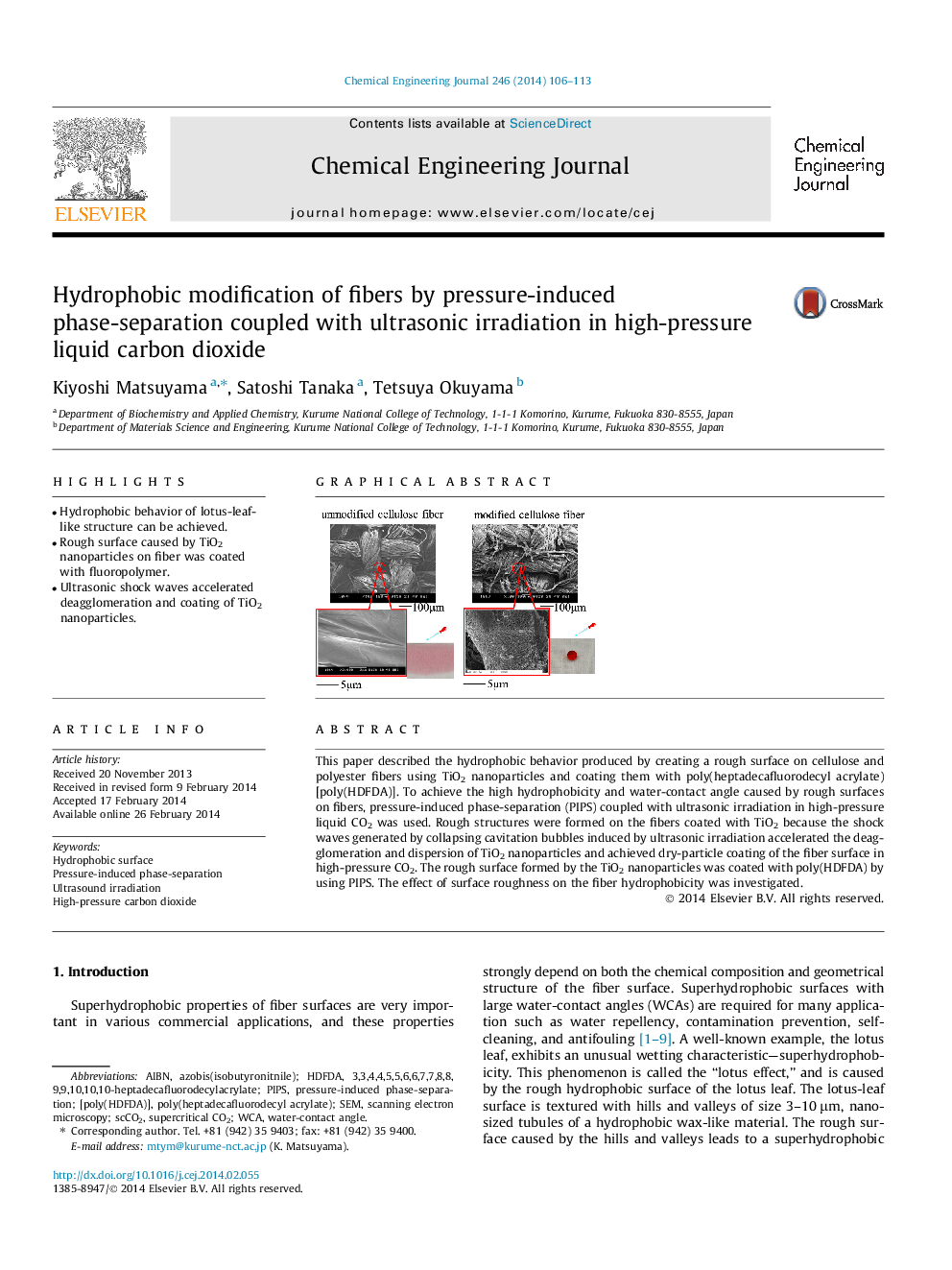| Article ID | Journal | Published Year | Pages | File Type |
|---|---|---|---|---|
| 147845 | Chemical Engineering Journal | 2014 | 8 Pages |
•Hydrophobic behavior of lotus-leaf-like structure can be achieved.•Rough surface caused by TiO2 nanoparticles on fiber was coated with fluoropolymer.•Ultrasonic shock waves accelerated deagglomeration and coating of TiO2 nanoparticles.
This paper described the hydrophobic behavior produced by creating a rough surface on cellulose and polyester fibers using TiO2 nanoparticles and coating them with poly(heptadecafluorodecyl acrylate) [poly(HDFDA)]. To achieve the high hydrophobicity and water-contact angle caused by rough surfaces on fibers, pressure-induced phase-separation (PIPS) coupled with ultrasonic irradiation in high-pressure liquid CO2 was used. Rough structures were formed on the fibers coated with TiO2 because the shock waves generated by collapsing cavitation bubbles induced by ultrasonic irradiation accelerated the deagglomeration and dispersion of TiO2 nanoparticles and achieved dry-particle coating of the fiber surface in high-pressure CO2. The rough surface formed by the TiO2 nanoparticles was coated with poly(HDFDA) by using PIPS. The effect of surface roughness on the fiber hydrophobicity was investigated.
Graphical abstractFigure optionsDownload full-size imageDownload as PowerPoint slide
